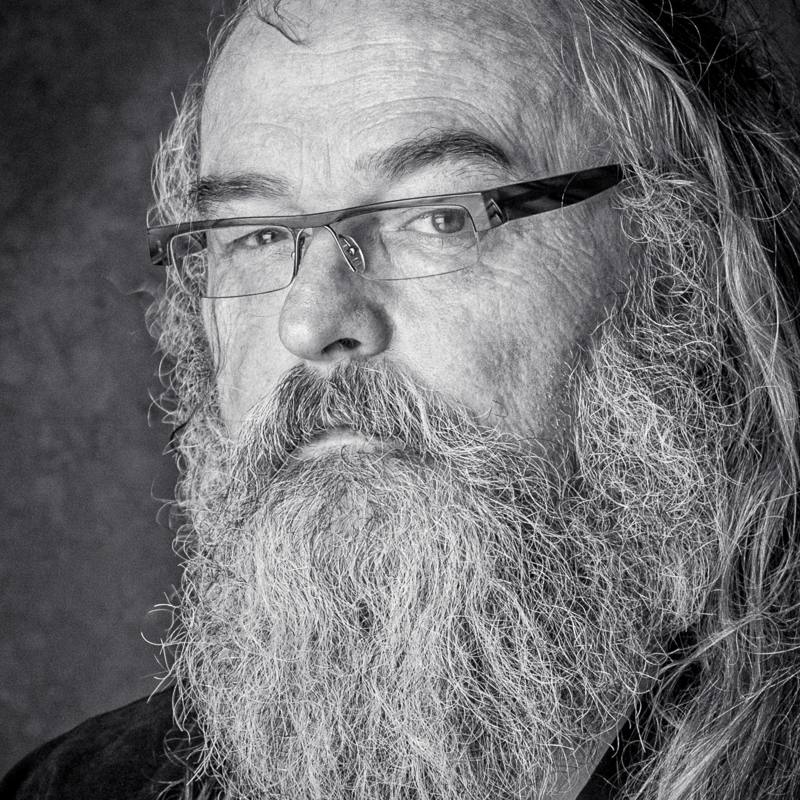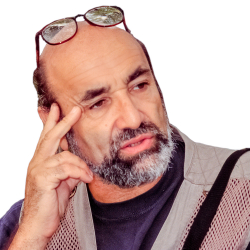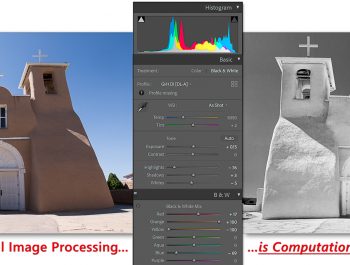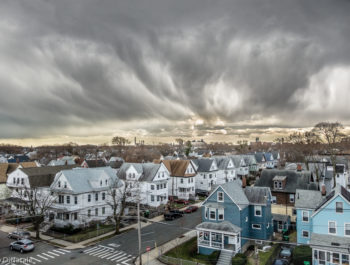I watched George’s video and as usual, he does a fine job of explaining things simply, but…
Since ACR/Lr added Process Version 2012, it’s actually a lot more complicated largely because of Local Laplacian Filters…wait, WHAT?
What PV 2012 introduced is image sensitive range adjustments. Originally developed fo dealing with HDR images, the engineering elves at Adobe tweaked some of the algorithms to work on standard range digital captures. This Lightroom Journal blog post from Tom Hogarty explains is a bit: Magic or Local Laplacian Filters?
The work done by Adobe engineers and fellows from MIT & University College in London wrote a paper called Local Laplacian Filters: Edge-aware Image Processing with a Laplacian Pyramid. If you are a glutton for techie ness, you can read the paper HERE.
In a nut shell, what PV 2012 did was to modify the tone mapping of raw images and alter the nature of the way Highlights and Shadows worked to bing out what otherwise might be difficult image data. Highlights is a modern form of high light recovery that compresses image data but allows you to tease the data apart. Shadows is an updated algorithm that replaced Fill Light and helps boost shadow detail.
The net result is that tone mapping is a bit more complicated post PV 2012 because the actual “numbers” may mean different things to different images. That’s the image sensitive adaptive nature of PV 2012.
And PV 2012 actually made ETTR even easier to employ because PV 2012 can preserve a huge amount of highlight data without clipping. Clearly, complete saturation of a photo site will result in clipping, but what may at first appear as clipping is actually what I call “clumping”, meaning a whole lot of image data clumped at near clipping without actual clipping.
At that point you simply need to use the Highlights slider (either globally or locally) in combination with Exposure and Whites to tease the highlight detail out.
Similar images adjustments using the Shadows control in conjunction with the Blacks slider allows for seat separation in the shadow regions–which can often be amplified by adding Clarity (ideally locally as apposed to globally).
Of course, ETTR presupposes that the scene you are shooting has luminance values that fall within the dynamic range of your sensor–and don’t forget, you lose a stop of dynamic range for every stop you push ISO over the native optimal ISO of your sensor.
After Micheal wrote that original article–which was what Micheal learned from Thomas Knoll after taking a trip shooting together–he got a lot of grief largely because he made the mistake of mixing his metaphors when talking about bit depth and signal to noise ratios. A lot of people misunderstood what Michel (paraphrasing Thomas) was trying to get across–don’t shoot digital like you used to shoot chrome film, under expose to keep from blowing out the highlights. I wrote up a web page talking about the ETTR myth: Un-debunking ETTR
I took a quick look at Bob’s article, but I need to read it during the light of day (not late at nite).
-
This reply was modified 3 years, 8 months ago by
 Jeff Schewe.
Jeff Schewe.
Jeff,
First, thank you for your time and thoughts. We have met before and discussed some of these concepts. You may remember me, I’m the short fellow with the wavey hair.
I understand PV 2012 is all about process benefits and was a big change (…but I must admit I didn’t know it was the “Local Laplacian Filters”). However, this processing all comes after capturing an optimum exposure which would benefit greatly from the advancement in PV 2012.
I reference a discussion with Eric (Madman) Chan in an Adobe forum in 2012:
BobDiN Community Beginner , Mar 13, 2012
I have been using “Auto” as the 1st step then continue adjustments by image as needed
– Do you agree with this approach?
– Does “Auto-tone” loose PV2012’s powerful adaptive “Highlights” and “Shadows” capabilities?
I guess the simple question is “Does “Auto-tone” take advantage of the adaptive “Highlights” of PV2012 while still finding a White & Black point?”
MadManChan2000 Adobe Employee , Mar 19, 2012
Yes, Auto Tone essentially works top-down.
No, Auto Tone does not lose PV 2012’s adaptive highlights & shadows capabilities. Instead, it leverages them.
Yes, it takes advantage of the adaptive highlights/shadows of PV2012 while still finding a white & black point.
As for your post, I don’t know how to answer all your thought paragraphically so I will try to express my thing by segment. Any of your subsequent thoughts will be appreciated
“I watched George’s video as usually, he does a fine job of explaining things simply, but…”
I understand there has been a lot of advancements in processing software algorithms but the all happens after digital capture.
“In a nut shell, what PV 2012 did was to modify the tone mapping of raw images and alter the nature of the way Highlights and Shadows worked to bring out what otherwise might be difficult image data. Highlights is a modern form of high light recovery that compresses image data but allows you to tease the data apart. Shadows is an updated algorithm that replaced Fill Light and helps boost shadow detail.”
The updated “Fill Light” algorithm seems it would be especially beneficial with ETTR’s placement of shadow data above noise.
“The net result is that tone mapping is a bit more complicated post PV 2012 because the actual “numbers” may mean different things to different images. That’s the image sensitive adaptive nature of PV 2012.”
As I understand it, PV2012 create data from data which makes processing of each digital capture image-dependent! Which is why my first ACR step is to “AutoTone”… to set out Adobe’s it’s Laplacian/Lilliputians fairies to tie down the Gulliver-ian data from an optimum exposure and optimally process the data of that given capture.
“Of course, ETTR presupposes that the scene you are shooting has luminance values that fall within the dynamic range of your sensor–and don’t forget, you lose a stop of dynamic range for every stop you push ISO over the native optimal ISO of your sensor.”
Hmm, I respect your knowledge but empirically in all my optimum-exposure shooting over the last 7 years, I have not noticed this in my photographic results. Maybe I’ve benefited from the Lilliputians in PV2012 😊.
I need to run my “Empirical Proof” test from my book at 2 extreme ISOs to validate.
“After Michael wrote that original article–which was what Michael learned from Thomas Knoll after taking a trip shooting together–he got a lot of grief largely because he made the mistake of mixing his metaphors when talking about bit depth and signal to noise ratios. A lot of people misunderstood what Michel (paraphrasing Thomas) was trying to get across–don’t shoot digital like you used to shoot chrome film, under expose to keep from blowing out the highlights.“
I agree with the misunderstanding of the chrome-film analogy… I’ve run into Zone System people who shoot their digital captures by shooting for minimum exposure for maximum black!
Jeff, Your Thoughts on This
When the shadows in a scene are captured at EV+2 (thus placing the shadow at Luminance of 40+), would you still call luminance at that value as being “shadows”?
Thanks again for your time and thoughts
Bob



